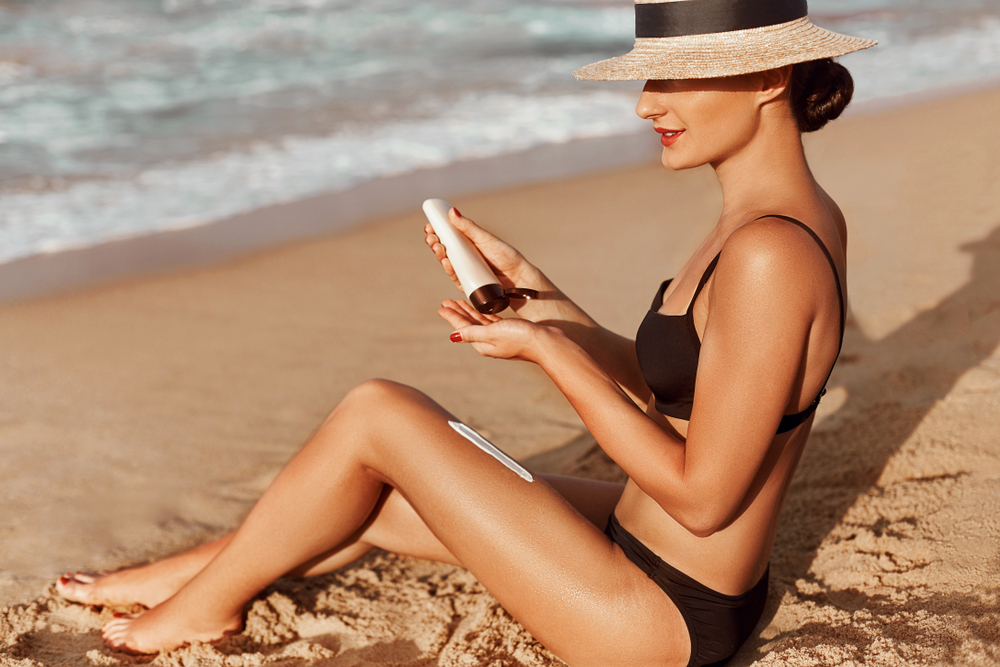
The sun is responsible for over 90 percent of skin aging and for most skin cancer. Its ultraviolet rays penetrate the skin cells’ DNA, causing unwanted changes in the skin’s foundation, which can potentially lead to cancer. The rays also break down the skin’s fibrous elastin, which is responsible for that plump, healthy skin look. Skin appears aged when it starts to show signs of laxity, dehydration, wrinkles, lines and dark spots. Want to avoid this aging? Protect your skin daily with sunscreen.
Because the sun is so damaging, it’s important to choose a sunscreen that can be easily integrated into your daily skincare and beauty routine. To do this, let’s decide between a sunblock and a sunscreen. Though these terms are used interchangeably, they are quite different.
Sunblock:
Known as physical sunscreen — bounces the sun’s rays off like a mirror. Our go-to sunblock at Dermatology + PlasticSurgery is Sunforgettable Total Protection Brush-on Shield SPF 50 by Colorescience. It gives an all mineral physical protection in a simple to apply brush-on applicator. It is great for the active Florida lifestyle and easy to use on the go.
Sunscreen:
Often called chemical sunscreen — absorbs the sun’s rays. My favorite pick is Isdin Eryfotona Actinica Ultralight Emulsion SPF 50 because it’s unique — containing DNA Repairsomes, decreasing the risk of cancer over time. Our men and oily skinned patients love this product, too, because of its ultralight nature.
Now, let’s decide what works best for each of us. Physical sunscreen is a good choice for those with sensitive skin, while chemical sunscreen is best for a more elegant application. Thankfully, sun protection products have come a long way in terms of application. No matter which product you choose, expect beautiful textures, mattifying effects, and formulas that can increase hydration.
Sunscreen should be the last step in your skin care routine every single day. Some physical protectants can even act like a face primer, as they lay on top of the skin, giving a smooth canvasfor makeup application.
Sunblocks and sunscreens are both effective forms of sun protection. The American Academy of Dermatology advises that either formulation is approved as long as it protects against UVA and UVB rays (broad spectrum), has a minimum 30 SPF (sun protection factor),and is water resistant.The key is to find the sunscreen that is right for you, reapply and stick with it.
A special piece of advice to strengthen the battle against the sun’s damaging rays is adding an antioxidant product to your daily facial routine. Antioxidants neutralize free radicals that cause havoc in the skin and helps your skin’s natural defenses become stronger. My favorite is Total Defense and Repair Broad Spectrum Sunscreen by SkinMedica. As a bonus, TD+R lightens, brightens and tightens the skin. I call it liquid gold!


Please see your dermatologist with any questions on how to protect your skin from the sun and if you are suspicious of damage that has already appeared.







